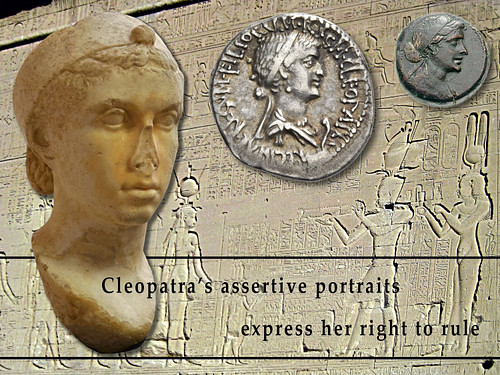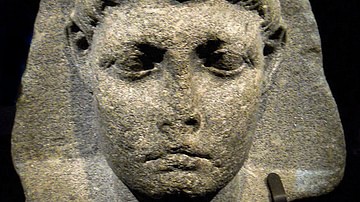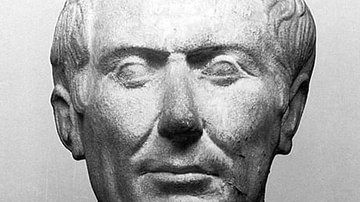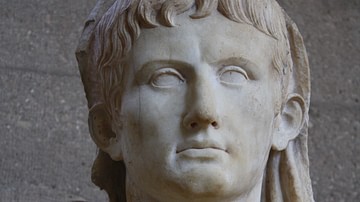The idea that Cleopatra VII (69-30 BCE), the famous last queen of ancient Egypt, owed her powerful position to her beauty persists. “The nose of Cleopatra: if it had been shorter, the whole face of the earth would have changed,” the French philosopher Blaise Pascal (1623-1662 CE) ruminated (Pensées, 162). While for Pascal this thought illustrated how something small can change the course of history, the statement is also based on the belief that Cleopatra owed her powerful position at that important juncture of history to her physique alone. This idea pervades our modern perception – in serious scholarship, Asterix comics and Hollywood cinema. Historians do not normally address matters of physical appearance, except to paint a portrait of a biographic subject, but not to answers questions about a person's historical significance of political power. So, was Cleopatra really attractive, and why does it matter what she looked like?
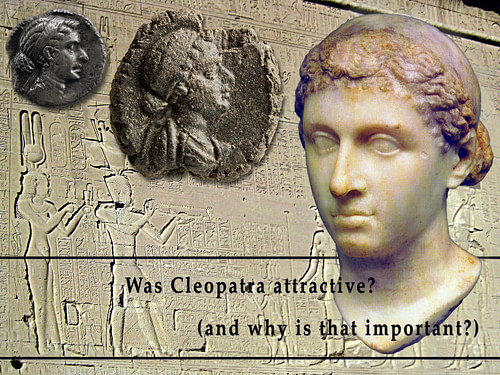
Regina Meretrix: Cleopatra in Roman Literature
For Pliny the Elder (23-79 CE), Cleopatra was no more than a “harlot queen (regina meretrix)” (Nat. Hist. 9.58.1), implying she owed her position of wealth and power to prostituting herself to Mark Antony (83-30 BCE) with her wanton physique. Similar ideas are echoed by Cassius Dio, who, writing in the 3rd century CE, claims that when Julius Caesar (100-44 BCE) first met Cleopatra, “she was a woman of surpassing beauty, and at the time [48 BCE], when she was in the prime of her youth, she was most stunning” (42.34.4); and when she offered Mark Antony his royal funeral in Alexandria, “even in mourning garments she was wonderfully stunning” (51.12.1).
What we read in Roman literature here are the reverberations of the slander campaign against Antony and Cleopatra preceding the final conflict led by Octavian (63 BCE - 14 CE), the later emperor Augustus (r. 27 BCE - 14 CE). It was in Octavian's very best interest to present the civil war against his colleague, Antony, a respected Roman statesman, rather as a foreign conflict with the Egyptian queen. Painting Cleopatra as a beauty who had sexually seduced Antony and a witch who had cast a magic spell over him was not only meant to emasculate Antony or demean Cleopatra, nor did it simply cast her in the role of the frightening foreigner. Octavian's propaganda consciously refused to acknowledge her as the wealthiest and most powerful female sovereign of the Hellenistic Mediterranean.
The Greek moral philosopher Plutarch (c. 50-120 CE), for his part, offers a more nuanced picture. He explains that “those who had seen Cleopatra knew that neither in youthfulness nor in beauty was she superior to Octavia,” the sister of Octavian and reluctant wife of Antony (Ant. 57.3); “for indeed her own beauty, as they say, was in itself not altogether incomparable, or such as to strike those who saw her” (ibid. 27.2). This is not to say that Cleopatra was unattractive, but she did not owe her relationships to Julius Caesar or Mark Antony to her youthful beauty. Indeed, Plutarch continues that her charm rested in her irresistible presence, her persuasive character, and her stimulating discourse because she was highly educated and spoke many foreign languages.
Even while modern historians, including Grace Macurdy (1932 CE), Michel Grant (1972 CE) and Stanley Burstein (2004 CE), acknowledge that Cleopatra was not exceptionally attractive (whether by ancient or modern standards), they tend to insist that she was admired for her beauty and seduced men with her physical appearance. Still, as Guy Weill Goudchaux (2001 CE) rightly emphasizes, to say that Cleopatra's beauty was “not altogether incomparable” does not imply that she was unattractive – let alone ugly. Nevertheless, it has been mostly due to the insistence of Sarah Pomeroy (1976 and 1984 CE) that scholars have come to accept that Cleopatra forged her powerful position with her intellectual capacities, strategic talent, and formidable wealth.
Regina Regum: Cleopatra's Hellenistic Portraiture
When trying to determine what Cleopatra may have actually looked like, we are confronted by a lack of conformity in the ancient portraiture. No life-sized statues or busts survive that can be incontrovertibly identified as portraying her. Only the extant coins issued by Cleopatra or in the queen's name give any impression of how she wished to be presented. None of the issues struck at Alexandria, however, are of high-value gold or silver.
After his conquest of Armenia (34 BCE), Mark Antony had silver denarii minted with his own portrait and that of Cleopatra on either side. His Herculean, muscular head can hardly be described as naturalistic. Hers in a sense reflects his, though less muscular, but similarly unnaturalistic. Her features include an aquiline nose and pointed chin. She wears a royal fillet (diadēma) in her wavy hair (which is tied into a bun), a globular ear pendant, a pearl necklace, and a draped garment. Before her bust is a cornucopia – the horn of plenty that symbolizes the wealth of the Ptolemaic kingdom. Around her head, the legend reads “Cleopatrae reginae regum filiurum regum (Of Cleopatra, Queen of Kings and Sons of Kings)” – an assertive expression of her position of power that is derived from her Lagid descent as well as her successive relations with Julius Caesar and Mark Antony.
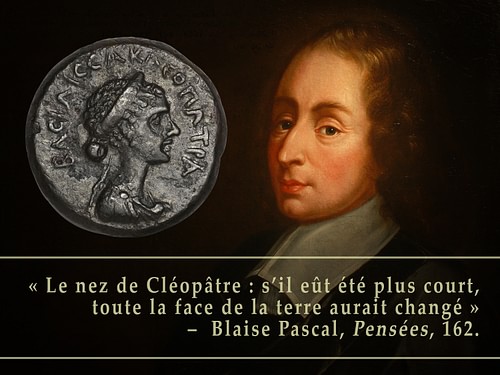
A silver hemiobol, struck shortly before the Battle of Actium (31 BCE), shows a more delicate diademed portrait with a rounder, though still prominent nose and otherwise fairly generic features. A more naturalistic portrait of Cleopatra is found on her best-preserved bronze coins (minted in Alexandria and Nea-Paphos, Cyprus). Here the portrait presents Cleopatra with an oval face, flat cheek with marked cheekbone and flat forehead, a curved brow that falls straight over the bridge of the nose, wide and pointed almond-shaped eye with heavy incised upper lid passing over thin lower lid at the outer corner of the eye, a prominent nose with a large, flaring nostril, a small nasal-labial plane, fairly full lips with a downturned corner of the mouth, a small round and projecting chin, and a smooth neck – her hair in a melon coiffure, bound by a broad fillet (diadēma) and tied into a round bun.
The only sculptural portrait that compares favorably to Cleopatra's representation on her coins is a marble head found along the Via Appia in 1784 CE and since on display in the Vatican Museums. Despite the missing nose, it can hardly be described as unattractive. Whether she would be considered “pretty” (whatever that may mean), however, remains very much in the eye of the beholder.
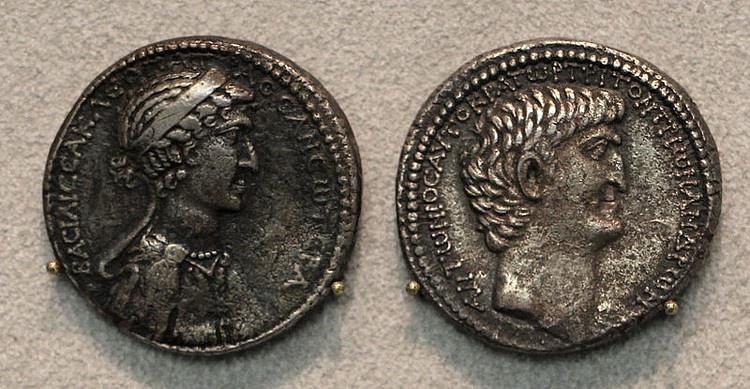
Another sculptural portrait that is often attributed to Cleopatra is a marble head that may also have been found along the Via Appia (c. 1786-97 CE) and is now in the Antiken Museum of the Berlin State Museums. According to Flemming Johansen (2003 CE) this portrait “suggests great physical beauty,” which in his mind “contrasts sharply with the rather unflattering coin portraits.” The same author, however, considers the Berlin head “neither to be Cleopatra nor ancient.” Johansen, however, has few followers who like him believe the portrait head is a modern forgery.
Cleopatra's image also appears on coins of Patrae, a port where Antony wintered before the Battle of Actium (32/1 BCE). The coin displays the bust of Cleopatra on the obverse, with the crown of Isis on the reverse. Her numismatic presence is a testament to Cleopatra's central role in this period.
Basilissa Kleopatra: Cleopatra in Ancient History
Few ancient names are as famous as that of Cleopatra – and even fewer women can match her fame in ancient history: perhaps Nefertiti, the wife of Akhenaten, and Olympias, the mother of Alexander the Great, come close. Cleopatra VII was nonetheless the last in a long line of powerful queens, from Arsinoe II and Berenice II Euergetis to the Cleopatras of the second half of the Hellenistic period. She was born at a momentous juncture of history when Roman power expanded farther into the eastern Mediterranean. Her father Ptolemy XII had to rely on the assistance of Pompey the Great to regain his throne (in 55 BCE, after an absence of nearly three years). Among the Roman forces that reinstalled the Ptolemaic king was a young cavalry commander by the name Mark Antony.
After her father's death (51 BCE), Cleopatra ascended to the throne and immediately engaged her eldest brother Ptolemy XIII (61-47 BCE) in a succession conflict that turned into a civil war. While she marched from Palestina against the royal army of the Ptolemaic Dynasty to regain power, the Roman Civil War (49-48 BCE) between Pompey and Julius Caesar literally landed on the Egyptian coast. Pompey was promptly killed on the orders of the king's advisors. Caesar suddenly arrived in Alexandria to avenge Pompey's murder. He reinstalled Cleopatra and was immediately beleaguered in the palace quarters in a prolonged military engagement known as the Alexandrian War (48-47 BCE). In the end, Ptolemy XIV (59-44 BCE) was installed beside Cleopatra, who was now pregnant with Caesar's child – his only son, known as Caesarion, but officially styled Ptolemy Caesar (47-30 BCE).
After the assassination of Caesar on the Ides of March in Rome (44 BCE), when she was, in fact, staying near the city, Cleopatra returned to Alexandria, had her brother killed, and installed Caesarion beside her as joint ruler. In the ensuing conflict between Antony and Octavian (the great-nephew of Caesar, and the later emperor Augustus), Cleopatra allied herself with Antony. Three children issued from their relationship, called Alexander, Cleopatra, and Ptolemy. Marriages to foreigner women were not acknowledged at Rome; in Alexandria Antony was never proclaimed king, but in 34 BCE all of Cleopatra's children were ceremoniously assigned kingdoms beyond Egypt. Cleopatra was thus able to expand the Ptolemaic Empire well beyond the largest sphere of influence her predecessors had ever been able to acquire. Egypt had always been one of the richest lands in the ancient world; it had now become the most powerful empire, rivalled only by the increasingly aggressive Roman Republic.
With civil war looming, Antony and Cleopatra gathered forces and advanced from Alexandria, through the Levant and Asia Minor, to Greece. At Patrae in Achaea they struck silver coins with her diademed portrait proclaiming her sovereignty with the legend “Basilissa Kleopatra (Queen Cleopatra)” (in the nominative, rather than the usual genitive). At the Battle of Actium (31 BCE), the strategic genius of Octavian's naval commander Marcus Agrippa claimed victory. Antony and Cleopatra, though defeated, regrouped in Alexandria – they were unable to prevent their doom as Octavian's forces approached. Antony committed suicide, and after giving him a royal funeral, Cleopatra followed suit (30 BCE). With her, the Hellenistic era came to an end.
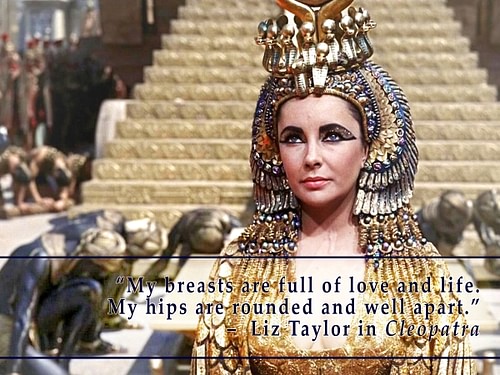
The important question is not whether or not Cleopatra was beautiful. Rather, it is important to understand the significance of her role in history, at this momentous juncture from the Hellenistic age to that of the Roman Empire. Permitted to engage in some counterfactual speculation, historians have asked what would have happened if Antony and Cleopatra had won the Battle of Actium, had defeated the Roman army and its naval force, and eliminated their opponent Octavian. Perhaps the growing enmity between East and West would have dissipated as the Mediterranean might have been ruled from Alexandria instead of Rome. Imagine for a moment Western history without its Roman legacy… Cleopatra was one of the few women in world history to rule in her own right (although always with a nominal male ruler beside her on the throne). She was queen in one of the richest countries of the ancient world, and as such the most powerful woman of her time. She offered her allegiance to two of the most powerful Roman statesmen, who desperately needed her military and financial support in civil wars of their own. Cleopatra was, in other words, one of the most assertive rulers of antiquity – and her physical appearance had little to do with her historical significance.
A version of this article was originally published at AncientWorldMagazine.com

